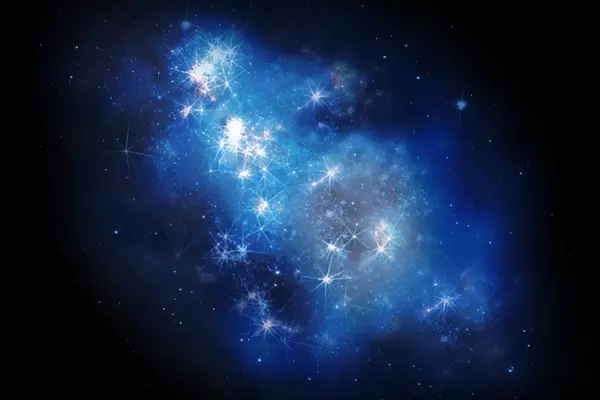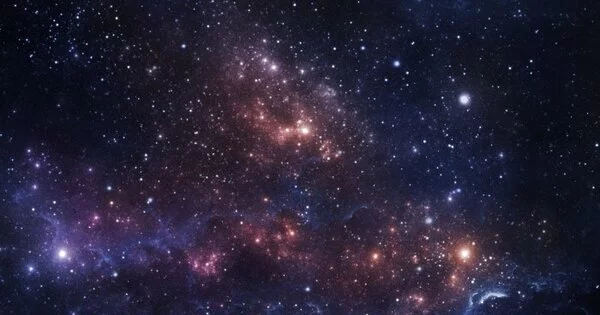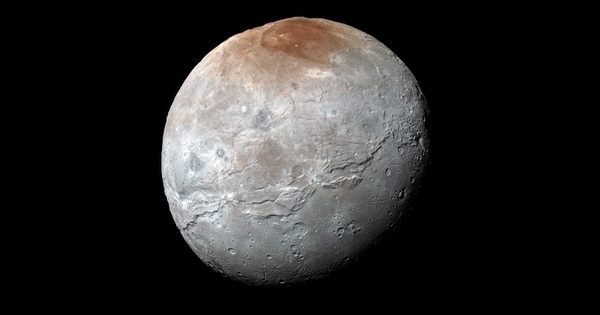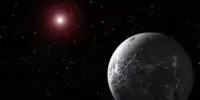Recent observations by astronomers have revealed the existence of metal-rich galaxies in the early universe. These galaxies, which were formed just a few hundred million years after the Big Bang, contain a significant amount of heavy elements, such as carbon, nitrogen, and oxygen, which are produced by stars.
While analyzing data from NASA’s James Webb Space Telescope (JWST) images of a well-known early galaxy, Cornell University astronomers discovered a companion galaxy previously hidden behind the light of the foreground galaxy – one that surprisingly appears to have already hosted multiple generations of stars despite its young age, estimated at 1.4 billion years.
“We discovered this galaxy to be super-chemically abundant, which none of us expected,” said Bo Peng, an astronomy doctoral student who led the data analysis. “JWST alters our understanding of this system and opens up new avenues for studying how stars and galaxies formed in the early universe.”
Peng is the lead author of “Discovery of a Dusty, Chemically Mature Companion to z~4 Starburst Galaxy in JWST Early Release Science Data,” published in the Astrophysical Journal Letters.
We discovered this galaxy to be super-chemically abundant, which none of us expected. JWST alters our understanding of this system and opens up new avenues for studying how stars and galaxies formed in the early universe.
Bo Peng
Earlier images captured by Chile’s Atacama Large Millimeter/submillimeter Array (ALMA) contained hints of the companion resolved clearly by JSWT, but they couldn’t be interpreted as anything more than random noise, according to Amit Vishwas, a research associate at the Cornell Center for Astrophysics and Planetary Sciences (CCAPS) and the paper’s second author.
The team calculated that the companion galaxy, SPT0418-SE, was within 5 kiloparsecs of SPT0418-47, one of the brightest dusty, star-forming galaxies in the early universe, its distant light bent and magnified by the gravity of a foreground galaxy into a circle known as an Einstein ring. The Magellanic Clouds, Milky Way satellites, are about 50 kiloparsecs away. The proximity suggests these galaxies are bound to interact with each other and potentially even merge, an observation that adds to the understanding of how early galaxies may have evolved into larger ones.

As galaxies in the early universe go, the two are small in mass, with “SE” being smaller and less dusty, making it appear bluer than the extremely dust-obscured ring. The researchers believe they live “in a massive dark-matter halo with yet-to-be-discovered neighbors” based on images of nearby galaxies with similar colors.
The companion galaxy’s mature metallicity — amounts of elements heavier than helium and hydrogen, such as carbon, oxygen, and nitrogen — was most surprising, given its age and mass. The team estimated that it was comparable to our sun, which is over 4 billion years old and inherited the majority of its metals from previous generations of stars, which had 8 billion years to build them up.
“We are seeing the remnants of at least a couple of generations of stars that lived and died within the first billion years of the universe’s existence, which is not typical,” Vishwas said. “We speculate that the process of forming stars in these galaxies must have been very efficient and began very early in the universe, particularly to explain the measured abundance of nitrogen relative to oxygen, as this ratio is a reliable measure of how many generations of stars have lived and died.”
















